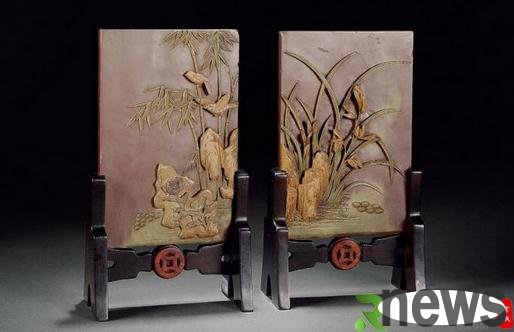
interposer? Purchase knowledge of insert screens
Purchase knowledge of insert screens
Originally a practical instrument, it is much larger than now, and is designed to cover the parts in the hall that are unwilling to be seen by outsiders, or to partition the space. Prices have been rising in recent years, because you should pay special attention to when purchasing:
Linking the core surface.
For people to enjoy is the main function of the screen, and the ferrule is the main body of the viewing. This is also the reason why the frame is single, but the ferrule material is colorful. No matter what material the ferrule is, double-sided. Among them, natural marble ferrules, jade ferrugs, ivory ferrugs, etc. are easy to carve on both sides. In addition, the double-sided production of some crafts such as porcelain plates, mother-of-pearl, cloisonné enamel is very difficult, and it is impossible to do it if you are not a master-level craftsman. The advantages of double-sided ferrule are obvious: — — If placed against the wall, you can turn the screen around at any time after you get used to one side and appreciate the other side of the ferrule. If placed between empty spaces, different patterns on both sides of the ferrule will create a different atmosphere and effect for the house. Of course, here refers to interposer screens of the same era and materials. If you choose between a single-sided interposer screen in the Ming Dynasty and a double-sided interposer screen in the Republic of China, you will naturally choose the former first.
Depend to the material. The
interposer consists of two parts: the seat frame and the core. Before the mid-Qing Dynasty, most of the screen inserts were made of top-grade mahogany such as red sandalwood, chicken wenge wood, huanghuali and other top-grade mahogany, and ivory carving, paint removal, Hetian jade and natural marble as the core. Since the late Qing Dynasty, it has become mixed with fish and dragons, and the materials used are not as good as before. Especially since the Republic of China, the top redwoods such as rosewood and other rosewood are rare. The seat frames made of camphor wood, nanmu and gallwood are rare. Most of them are made of common mountain elm, ebony, and boxwood. The grade of the tampon has also decreased a lot. The engravings of porcelain, mother-of-pearl, bamboo carvings, pine flower stones, Qiyang stones, etc. are used as materials. Occasionally, there are excellent materials. Because of the loss of ancient production methods and the death of skilled craftsmen, the screens made often lack charm. Therefore, when collecting the insert screen, you must carefully distinguish the material of the seat frame and the insert core. If you see that the material of a socket frame and the core of a socket are too far apart, you should be careful of "second-hand combination" %.
Follow the shape. The shapes of the
interposer are large and small, and there are great differences. The larger ones are more than 3 meters high, while the smaller ones are only 20 cm. Common interposer screens are generally square in a regular shape, which is harmoniously matched with the rectangular desktop and highlights aesthetic taste. But there are also some interposer screens that have no shape.
marble interlayer cleaning
1. Marble is a porous material, so it is easy to be contaminated, and there should be less water used for cleaning.
2. Wipe regularly with a slightly damp cloth with mild detergent, and then wipe dry and polish with a clean soft cloth.
3. Marble furniture with severe wear is difficult to deal with. You can wipe it with steel wool and then polish it with an electric grinder to restore its dull gloss, or wipe it carefully with a liquid scrubber.
4. Use lemon juice or vinegar to clean the stains, but it should be very important to stay for lemon for more than 1-2 minutes.
Maintenance of marble interlaced screens
For old or expensive marble interlaced screens, professionals should be asked to deal with them. Painted marble furniture may have to be treated with a paint peeler and may need to be applied several layers. After removing all the paint, wipe it with steel wool and polish it with an electric grinder, stay for two hours, then wash and dry. For oil traces, wipe them with ethanol (alcohol), acetone (lignin) or lighter electrical oil, then wash and dry them.
Cleaning of wood screen
First use a clean and soft cloth to wipe the surface of the screen, and wipe away the dust and debris on the surface. Then spray the prepared cleaning pot with a watering can, then use a cleaning cloth or a soft brush to clean it. After cleaning, wipe it lightly with a dry and soft cloth to remove the water stains. Maintenance of wood inserts
If it is a cloth panel, the most common one is of course the dirt on the layout. A small part of the dirt can be wiped with a foam cleaner for about 10 seconds, and then wiped with a clean soft cloth. Do not wipe it with oil, which will cause fading and stains. If it is a glass panel, dirt will easily leave behind when wiping, it is extremely difficult to clean. You can wipe it with a soft cloth dipped in water and wipe it with a newspaper to keep it as bright as new.